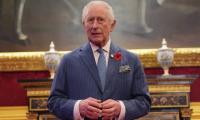Pakistan is often touted as an excellent potential tourist destination – and for good reason. In reality, however, the tourism industry in Pakistan is plagued by poor planning, infrastructural and accessibility challenges, and the rapid congestion occurring in our tourist destinations. These problems, in turn, stem from deeper and structural issues and are linked closely to how our approach to physical spaces and land has manifested over time.
Public spaces – and sites of tourism in particular – in Pakistan remain contested and access to them highly iniquitous. This dynamic takes on multiple forms. In our urban centers and cities, for instance, public and open land is increasingly giving way to horizontal sprawl and the emergence of gated communities. These spaces cater only to a select few, and are home to several amenities such as parks and privately owned tourist destinations. In contrast, public parks and urban tourist sites accessible to the majority remain in derelict conditions, often giving way to private development.
A second facet of this iniquitous approach is the congestion we witness in public tourist spots such as Murree, where increased vehicle ownership and higher incomes have allowed larger segments of the population to enjoy a reprieve from urban life. Here too, however, we witness disparity in access to these physical spaces. On the one hand are the more accessible and inclusive spaces which are characterized by congestion, lack of parking and significant encroachment and deforestation. On the other hand, we witness private resorts and clubs with expansive spaces for mobility, pristine green spaces and a comfortable and open notion of space. Thus, access to these tourist spots and the gratification one derives from them are now increasingly shaped by one’s ability to access these spaces and avoid the pitfalls of open, public tourist destinations.
It thus becomes necessary that we view tourism and access to tourist spots in the backdrop of this political and economic reality and how this reality has shaped access to and the form of physical spaces in Pakistan. In Pakistan, unfortunately, a lack of sustainable and inclusive development has significantly hampered the ability of our physical spaces to cater to the needs of the majority and has hence resulted in a mode of urban development that benefits the privileged.
A new policy of tourism in Pakistan, therefore, will focus firmly on the design and access to public spaces in the country and recognize how these spaces constitute the basis of an adequate tourism policy. This, in turn, requires a complete rethink of urban development in Pakistan towards an urban policy that makes our cities inclusive, walkable and geared towards the majority.
This policy will once again be multifaceted. First, it must recognize that our cities – and not just tourism centers – require radical change. Pakistan must move away from the current paradigm of horizontal sprawl, car-oriented and low density development and towards a high density and walkable approach to cities. This will catalyze tourism in Pakistan’s cities and allow people to occupy and use city centers. Lahore can be a significant test project for this. Inner or ‘androon’ Lahore, for example, holds immense potential for historical and cultural tourism. A drive towards making these spaces walkable, dotted with street infrastructure such as roadside sitting and benches coupled with adequate and safe parking can significantly boost tourism here. This will reduce parking stress, provide local and nearby tourism opportunities and also stimulate the local economy.
Here again we must recognize the multidimensional approach to physical spaces and tourism. Inclusive spaces can both promote tourism and improve the environment. The incumbent government’s initiative of developing Miyawaki forests serves as a case in point. As these forests expand, they can become centers of local recreation and enterprise by encouraging people to populate these spaces and the subsequent impetus that will serve local business.
Our approach towards tourist destinations such as Murree, coastal spaces and the northern areas, meanwhile, must center on a community driven and organic form of development. Pakistan must eschew drastic reconfigurations of these spaces for the purpose of promoting tourism; as cases from Johannesburg, South Africa and cities in Brazil show, this reconfiguration often occurs at the expense of the common folk.
Instead, we must understand how tourism in these spaces must respond to the unique realities of the areas and the social and cultural norms locals adhere to. This will not only guarantee sustainable and inclusive growth which will foster a sense of ownership amongst locals, but will also ensure local sentiments are not disrespected as was the case recently in one of the northern parts of Pakistan.
At the same time, physical development must respect local modes of land ownership while protecting communal spaces and commons. Protecting the commons and developing inclusive spaces, in fact, must take precedence over gated and inaccessible development. This will prevent the massive inflation we have witnessed in land prices in the northern areas and the concomitant deforestation currently taking place.
Finally, we must realize that physical spaces possess a sociology of their own, and as writers such as Henri LeFebvre and Janet Abu Lughod argue, these spaces and their interaction with people shape human psyche and existence. It is only through sustainable and inclusive development of these spaces, therefore, that we can ensure comfort and growth for all.
The writer is a civil servant and studied at Cornell University, USA and at the University of Oxford, UK.















